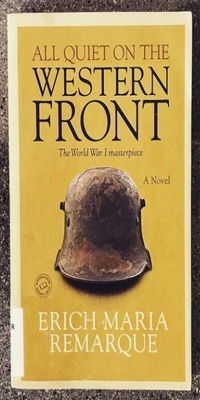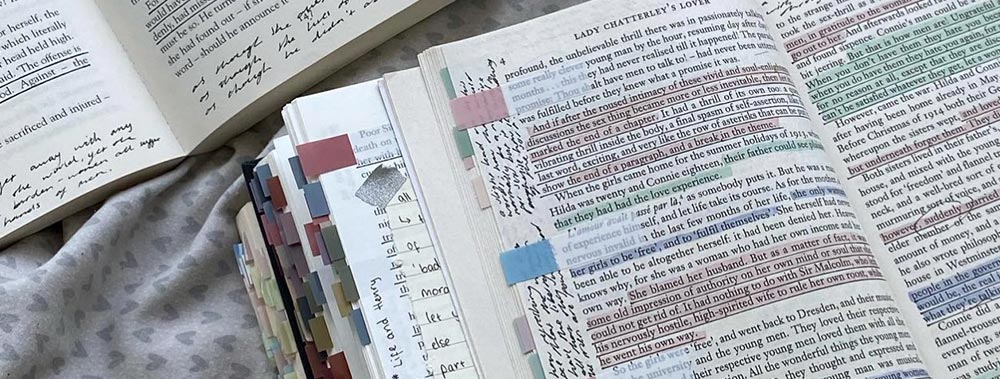All Quiet on the Western Front: Summary, Plot, Characters, Literary Analysis & More
“All Quiet on the Western Front” is a poignant novel by Erich Maria Remarque, originally published in 1928 under the German name “Im Westen Nichts Neues”.
This novel stands as one of Remarque’s most acclaimed literary achievements, captivating both critics and readers alike.
Set against the backdrop of World War I, the narrative delves into the harrowing experiences of German soldiers, particularly the protagonist Paul Bäumer.
As the war rages on the Western Front, Paul and his comrades grapple with the brutal realities of trench warfare, hand-to-hand combat, and the profound trauma that accompanies conflict.
Remarque skillfully addresses themes of camaraderie, the futility of war, and the impact of violence on young minds, painting a vivid portrayal of the devastating consequences of armed conflict.

"All Quiet on the Western Front" addresses themes of camaraderie, the futility of war, and the impact of violence on young minds, painting a vivid portrayal of the devastating consequences of armed conflict.
Table of Contents
Summary The Plot Characters Key Themes Genres Language used Literary devices Summing upThe Plot
Set amidst the chaos of World War I, “All Quiet on the Western Front” follows Paul Bäumer, a young German soldier in the trenches.
Paul, along with his fellow German soldiers, faces the brutal realities of warfare on the Western Front.
They encounter French soldiers in harrowing battles, witness Russian prisoners of war, and find solace in fleeting moments with French girls.
Paul’s personal journey reflects the toll of conflict, as he transforms from an eager recruit into a battle-hardened veteran.
Amidst the French lines, Paul’s experiences unveil the futility of war, the fragility of life, and the camaraderie that develops among soldiers facing unimaginable horrors.
Characters
The tapestry of characters in “All Quiet on the Western Front” contributes to the novel’s profound exploration of war’s impact on humanity.
Paul Bäumer
The novel’s protagonist and a young German soldier, Paul experiences the stark realities of war that profoundly change him from an idealistic youth to a battle-weary survivor.
French Soldiers
Representing the enemy, French soldiers are caught in the same cycle of violence, emphasizing the shared human experience of suffering in war.
Russian Prisoners
Captured by the Germans, these prisoners showcase the dehumanizing effects of war on both sides, highlighting the universality of suffering.
French Girls
Offering fleeting moments of solace, French girls symbolize brief respite from the horrors of war, demonstrating the fragile beauty of human connections.
Paul’s Comrades
Fellow German soldiers like Albert Kropp and others forge deep bonds as they endure the horrors of battle, portraying the unbreakable camaraderie born in the face of adversity.
Key Themes
Erich Maria Remarque’s “All Quiet on the Western Front” masterfully encapsulates various themes that reflect the human condition during wartime.
The Brutality of War
The novel vividly portrays the horrors of battle, as exemplified by Paul Bäumer’s harrowing experiences on the front lines, underscoring the devastating impact of war on young lives.
Comradeship and Camaraderie
The bond between soldiers like Paul and his friends serves as a glimmer of hope amid the darkness, highlighting the resilience and support that arise in the face of adversity.
Loss of Innocence
The disillusionment Paul faces as he witnesses the stark contrast between patriotic ideals and the grim reality of war showcases the profound loss of youthful naivety in the crucible of combat.
The Futility of War
Through the relentless cycle of violence and death, the narrative underscores the senselessness of war, as seen in the tragic deaths of characters like Kemmerich and the ultimate futility of territorial gains.
Genres in All Quiet on the Western Front
The work seamlessly blends multiple genres to deliver a powerful and multifaceted narrative. These are listed below.
War Novel
The predominant genre, the war novel, provides a gritty and realistic depiction of life on the front lines, drawing readers into the visceral experiences of soldiers like Paul.
Coming-of-Age
This novel also functions as a coming-of-age story, tracing Paul’s evolution from an eager youth to a disillusioned survivor, showcasing the transformation brought about by the crucible of war.
Language used in All Quiet on the Western Front
Remarque’s language in “All Quiet on the Western Front” is both haunting and visceral.
He skillfully conveys the horrors of war, utilizing phrases like German army and French soldier to evoke a sense of conflicting identities within the characters.
Through the journey of Paul Bäumer, or “Paul Baumer,” Remarque employs spare yet impactful prose to explore the disillusionment and camaraderie experienced by soldiers facing the brutal reality of battle.
The German title “Im Westen Nichts Neues” or “All Quiet on the Western Front” encapsulates the desolation, mirrored in Paul’s experiences and interactions, creating an atmosphere of quiet despair and resilience.
Literary devices in All Quiet on the Western Front
Remarque employs literary devices in “All Quiet on the Western Front” to convey the psychological and emotional toll of war.
The repetition of phrases like “Paul’s friends” and “Paul returns” emphasizes the cyclical nature of conflict, mirroring the repetitive trauma experienced by soldiers.
Descriptive moments like “French soldier jumps” and “newly arrived German recruit” employ vivid imagery to capture the chaotic and unpredictable nature of the battle, enhancing the novel’s realism.
Through symbolic actions such as when Paul carries the farmer’s son, Remarque reveals deeper layers of meaning, showcasing the burdens soldiers bear, both physically and emotionally, adding depth to the narrative.
Similes
Remarque employs vivid similes to amplify the reader’s connection to the narrative’s intense experiences.
When Paul stabs a French soldier, likening it to “stabbing at the dark,” the simile captures the disorienting and morally murky nature of combat, fostering empathy for the characters.
The simile “like a training camp” describes the front lines, juxtaposing the harsh reality of warfare with the expectation of preparation, deepening the sense of irony.
Likewise, the comparison of a shell hole to a cratered moon evokes the devastation of the landscape and its impact on young men like Paul.
As Paul undergoes surgery, similes like “as if… pressed out” vividly portray his altered state, enriching the reader’s immersion.
Metaphors
When Paul begins to wade through the mist, the metaphor symbolizes the fog of war that obscures clarity and morality.
The supply depot, described as a rat’s nest, hints at the chaos and desperation of warfare, reflecting the dehumanizing conditions soldiers face. The image of “many French soldiers dissolved in the earth” metaphorically represents the human cost of battle and underscores its irrevocable impact.
Likewise, Paul’s contemplation while spending time with a dead body becomes a metaphor for the existential reflection prompted by war’s horrors.
The metaphorical depiction of French women as sisters of charity amidst devastation showcases their compassionate resilience.
Remarque’s masterful use of metaphors enriches the reader’s understanding of the story’s complex themes.
Analogies
The analogy of the German emperor as a sorcerer’s apprentice reflects how the monarchy’s power spiraled into a destructive war, symbolizing the loss of control over a cataclysmic event.
Similarly, the analogy of a “cannonball weighing a ton” during a German victory mirrors the emotional and physical weight of combat experiences, offering readers an accessible lens through which to understand the burdens faced by soldiers.
Imagery
Descriptions of dead bodies and the aftermath of a German attack evoke the brutality of warfare, engaging readers’ senses to grasp the stark realities faced by soldiers.
The imagery surrounding the arrival of French reinforcements paints a picture of chaos and desperation on the battlefield, heightening the emotional impact.
These visual and sensory details, such as the haunting depiction of three French women amidst destruction, enable readers to connect with the characters and their traumatic experiences.
Symbolism
The symbolism we see when the German attack takes the French front line serves as a haunting representation of the indiscriminate violence and chaos of war, echoing the broader theme of the futility of conflict.
Paul’s post-traumatic stress disorder symbolizes the deep psychological scars borne by soldiers, shedding light on the lasting trauma that war inflicts on the human psyche.
The German delegation symbolizes the disconnect between leadership and those who bear the brunt of combat, emphasizing the theme of disillusionment.
The fate of Paul’s close friends becomes symbolic of the devastating impact of war on human relationships, resonating with the novel’s exploration of camaraderie and loss.
Personification
Paul’s classmates and fellow soldiers are personified as “children of yesterday” and “lost generation,” respectively, highlighting the loss of innocence and the emotional toll of war on young lives.
As Paul calls his generation the “iron youth,” personification reflects their resilience and the steeling of their spirits amidst conflict.
The setting of northern France is personified with “dreary autumn,” evoking a somber atmosphere that parallels the soldiers’ emotional state.
Hyperbole
Paul’s overwhelming feelings, like “the earth is pulling me down,” utilize hyperbole to accentuate the weight of his experiences.
Exaggeration also characterizes depictions of young soldiers, like old folk’s homes, and the grim reality they confront.
The hyperbolic nature of a school official’s burning enthusiasm and an army report’s total victory serves to emphasize the stark contrast between official rhetoric and the brutal truth.
Hyperbole heightens the sense of tragedy, as seen in Paul’s vivid portrayal of hand-to-hand fighting that extends to exaggerated physical and emotional extremes.
Irony
The school official’s burning enthusiasm for war contrasts with the grim reality of combat, highlighting the situational irony inherent in his ignorance of the horrors faced by soldiers.
The army report’s claim of “total victory” starkly contrasts with the actual devastation and loss on the battlefield, employing dramatic irony to expose the gap between official rhetoric and the truth.
The image of Kemmerich’s boots, initially symbolizing a soldier’s pride, becomes ironic as they outlast their owner, symbolizing the disregard for individual lives.
The juxtaposition of the best picture and the harrowing experiences within Paul’s regiment underscores the ironic gap between societal ideals and war’s harsh realities.
Amid the patriotic speeches and preconceived notions of a glorious war, the novel reveals the stark irony of the First World War that shatters young men’s lives, leaving them disillusioned in the face of the brutality of previous battles.
The ironic portrayal of older soldiers as veterans belies their vulnerability and emotional scars. Remarque utilizes these ironic elements to offer a searing critique of the glorification of war and to expose the stark discrepancy between perception and truth on the battle-ravaged Western Front.
Juxtaposition
The juxtaposition of Joseph Behm’s fate, who was forced to join against his will, against Kemmerich’s mother’s visit accentuates the tragedy of young lives cut short in battle, creating a poignant contrast between conscription and personal sacrifice.
The juxtaposition of soldiers killed in action and the slow, agonizing process of dying underscores the harsh realities of war, contrasting the swift brutality of combat with the prolonged suffering on the battlefield.
The juxtaposition of soldiers dying slowly and the quick, brutal nature of a son’s death juxtaposes the inherent contradiction of war’s violence.
In the final chapter, a depiction of Erzberger’s delegation signing documents against the backdrop of soldiers’ ongoing deaths presents a thought-provoking contrast between bureaucratic decisions and the relentless horrors of war.
Remarque’s use of juxtaposition deepens the reader’s engagement with the complexities of conflict and its human toll.
Paradox
As Paul spends time with the dead body, a paradox emerges between his desire for connection and the stark isolation imposed by the brutality of war.
Similarly, when the French reinforcements arrive it paradoxically combines relief with the realization of the unending cycle of conflict.
These paradoxes encapsulate the profound tension between the realities of war and the ideologies that perpetuate it.
Allusion
In “All Quiet on the Western Front” by Erich Maria Remarque, allusions to literary and historical elements enrich the narrative’s depth and meaning.
The mention of an “army report” alludes to the bureaucracy of war, echoing the disconnection between official accounts and the harsh realities faced by soldiers. When Paul feels a wrenching pain, it alludes to the deeper emotional anguish of war, tapping into the broader human experience of suffering in literature.
The scene where Paul sees his leg amputated alludes to the immense physical and emotional trauma of war, reminiscent of the grisly wounds described in historical records. These allusions imbue the story with universality and historical resonance.
Allegory
The depiction of the soldier as a “young man” thrust into the horrors of war functions as an allegory for the disillusionment of an entire generation.
The stark juxtaposition between the “patriotic speech” and the grim realities of the “previous battle” serves as an allegory for the gap between idealism and the brutal actuality of combat.
The “older soldier” becomes an allegory for the psychological scars borne by those who have endured prolonged suffering.
Repetition
Repetition underscores the grim themes of “All Quiet on the Western Front.”
The persistent recurrence of trench warfare and world war serves as a haunting reminder of the unrelenting horror.
The repetition of “Albert Kropp” emphasizes the camaraderie formed among soldiers, emphasizing their shared experiences.
The recurrence of northern France evokes the geographical continuity of destruction. This repetition reinforces the novel’s bleak themes and magnifies its emotional impact.
The Use of Dialogue
Dialogue in “All Quiet on the Western Front” efficiently characterizes individuals and underscores thematic tensions.
Conversations reveal camaraderie formed amidst the horrors of trench warfare, reflecting shared pain.
Discussions about disillusionment with the German army convey themes of lost ideals, deepening the narrative’s emotional resonance.
Word Play
Describing the soldiers as “iron youth” encapsulates their hardening in the crucible of war.
The phrase “wading through the mist” conjures both the physical fog of battle and the moral ambiguity faced by the characters.
Such wordplay deepens the story’s layers, allowing readers to engage with its complexities on multiple levels.
Parallelism
The recurring motif of “faces become dark” mirrors the inner transformation of soldiers as they experience the horrors of war.
Remarque employs similar phrasing when describing “old ideals” and “bitterness,” linking individual disillusionment with larger societal shifts.
Parallelism enriches the story by connecting personal struggles with broader themes, forging a powerful resonance throughout the narrative.
Rhetorical Devices
Erich Maria Remarque employs rhetorical devices in “All Quiet on the Western Front” to amplify persuasion.
Rhetorical questions provoke thought, urging readers to question the realities of war. Parallelism, like the repetition of “world war,” reinforces themes and the grim atmosphere, magnifying the novel’s emotional impact. These devices enrich the narrative’s persuasive depth.
All Quiet on the Western Front: FAQs
Navigate through frequently asked questions about the plot summary of “All Quiet on the Western Front”. Our aim here is that you gain deeper insights into its themes, characters, and narrative trajectory.
What’s the portrayal of German soldiers during World War I in the book?
The book portrays German soldiers as young men disillusioned by the horrors of war, highlighting their transformation from idealism to the brutal realities they face on the battlefield.
How is a French soldier depicted in the story?
A French soldier is depicted as both an enemy combatant and a fellow human trapped in the same cycle of violence, emphasizing the shared suffering experienced by soldiers on both sides
What insights does the book offer into the lives of the German Army?
The book offers insights into the German Army’s lives through the eyes of characters like Paul Baumer, revealing their camaraderie, struggles, and psychological trauma, showcasing the human cost of war.
Summing up: All Quiet on the Western Front: Summary, Plot & More
“All Quiet on the Western Front” resonates as a powerful testament to the devastating toll of war on young lives.
Erich Maria Remarque’s poignant portrayal of soldiers grappling with disillusionment, trauma, and the shattering of innocence unveils the raw emotional and psychological wounds inflicted by conflict.
The novel’s themes of camaraderie, loss, and the futility of war transcend time, touching readers across generations.
Through vivid imagery, realistic dialogues, and masterful literary techniques, Remarque crafts a profound narrative that forces us to confront the contradictions of human nature in times of extreme adversity.
“All Quiet on the Western Front” stands as a timeless work, a haunting reminder of war’s impact, and an enduring call for empathy and peace.
Other Notable Works by Erich Maria Remarque:
- “The Road Back” (1931)
- “Three Comrades” (1936)
- “Arch of Triumph” (1945)
- “The Black Obelisk” (1956)
- “Heaven Has No Favorites” (1961)
These captivating novels by Erich Maria Remarque delve into themes of post-war life, camaraderie, love, and the human spirit, offering readers a chance to explore his diverse literary contributions beyond “All Quiet on the Western Front.”







